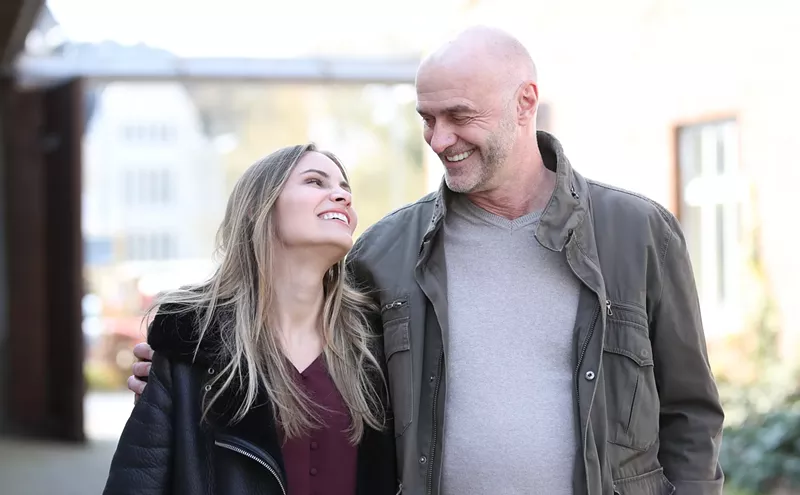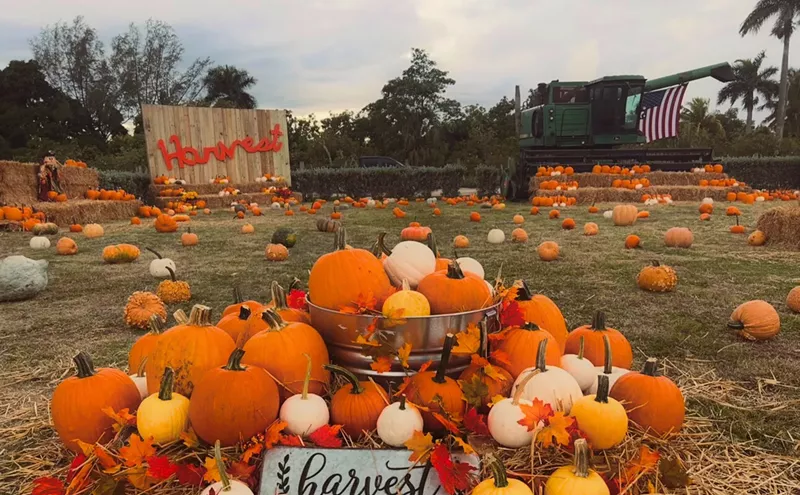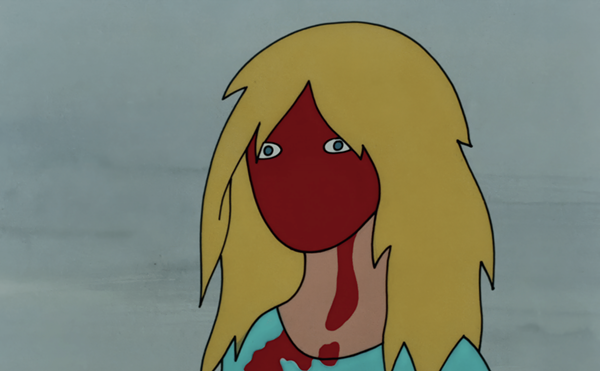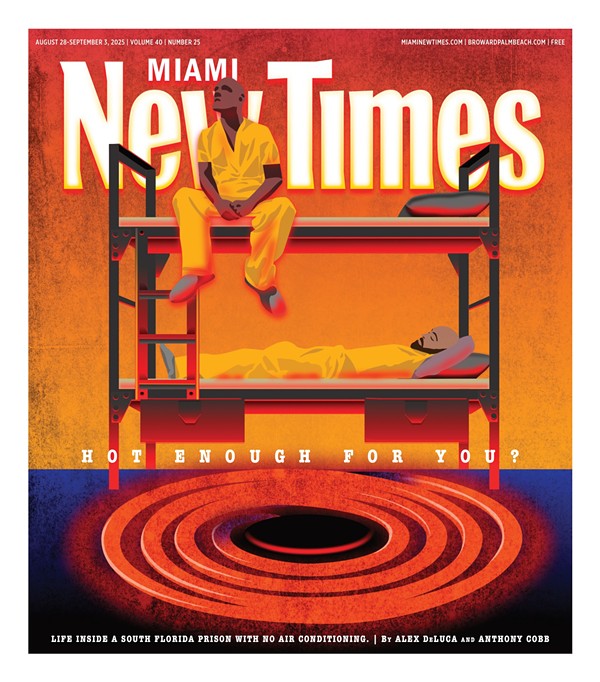Geisha II is one of the arresting portraits in Richard Butler's first solo show, in which the artist bathes his subjects in an intoxicating air of melancholy, rendering his models in a deeply introspective way, as if capturing them through the gauze of memory.
The subjects of his lavish oil on canvas works are mostly family and friends, but Butler furiously distorts their features and bodies, making their skin appear pitifully wan and charged with a presence that's difficult to shake off.
He often paints them in masks and drapes them in menacing black gear. He maroons them in bleak natural settings or places them under deceptively peaceful skies, adding to their pervasive sense of loneliness, alienation, and unease.
Openly riffing on the Mannerist style, Butler, the former frontman for the Psychedelic Furs, makes harmony out of these discordant elements, creating psychologically freighted works that strike a haunting note in every bar.
Before he formed his band in the late Seventies, Butler attended art school in London. He's been painting up a storm the past decade. It shows.
Mother I'm a Poet II depicts the artist's brother and former bandmate, Tim. Butler wraps him in a black feather boa with his head cocked toward the sky, making him appear mystifyingly serene. His arms are exaggeratedly large and his hands are clutched tightly to his midriff, as if he's warding off a blow. The jug-eared man's hair is close-cropped, his nose nearly flattened, and his eyes turned up in their sockets, giving the impression that he is either fervently praying, or dull-witted, or both.
The painting next to it, Mother I'm a Poet I, exudes a sinister vibe. A bondage-like mask, complete with Mickey Mouse ears, obscures the shrunken head of the subject, who is cocooned in a tarry fur hide. An elongated arm snakes across his chest, and behind the figure rise the branches of a leafless tree in a scene that almost clamors with an eerie silence. Although the slope-shouldered oddball's body is flatly rendered, Butler's brushwork pops out on the garment's fuzzy edges and on the reflective surface of the mask, adding depth to the surface and showing Butler's adroit hand.
As in all of his paintings, color is reduced to bold expanses of inky blacks and cadaverous insinuations of flesh, with subtle, muted exceptions calling attention to the outdoors.
There is an expression of detachment and torpor in what little one sees of the face of a woman in a Mickey Mouse-ear cowl, who is the subject of another startling portrait, Girlinthelastdayoftheoncebeautifulworld. Her mouth is frozen in a rictus, her eyes downcast and leaden with despair. The blue postcard sky above her and the gaudy, super-size beaded necklace she wears offer the only note of cheer in a work steeped with tension.
In contrast, Benzene Poster Girl in Weisbaden, Butler's portrait of his friend Marla Hanson, and among the largest works on display, seems placid in nature, despite the subject's tortured history.
The former model became famous in 1986 when Hanson's landlord hired two thugs to hack her face up with razors outside a New York City bar after she spurned the man's sexual advances.
The artist has situated a youthful, pigtailed Hanson against a sylvan backdrop at a lake's edge, where she gazes wide-eyed at the viewer with a surprisingly tranquil expression. The only crack in her composure seems to be the fissure Butler hints at where she parts her hair.
Forgoing the listlessness of many of the other subjects in Butler's paintings here, people who can never bring themselves to look the viewer in the eye, Butler seems to suggest that Hanson is used to being stared at, and almost challenges one to escape her searching eyes. Hers is the only portrait in which the subject faces the viewer dead on.
In Bruk's project room, This is the last song I will ever sing, a portrait of the artist's daughter, also turns the head. Butler, a single parent, has lovingly rendered his girl in profile and encased her noggin in a translucent bubble, as if to protect her from the vagaries of life.
His works are at once unconventional, provocative, and insightful. Most of all, Butler's paintings of people expose the wildly imaginative artist at their core.
Also making her solo debut at the gallery is Japanese artist Midori Harima.
She creates unusual paper sculptures by taking pictures from publications, photocopying them in black and white, and pasting them together to create fragile, evocative forms.
In a hallway near the entrance to one of the gallery's back rooms, three delicate spotted deer the size of Jack Russell terriers leap overhead. A recurring theme in Harima's work, they reference the sacred sika deer that have existed in the Kasuga Hills east of Nara, Japan since prehistoric times.
In the room next to them sculptures of a wolf, owl, and snake look as if they have been pancaked, conveying a sense of desiccated roadkill that has been scraped off the asphalt, then framed.
In a corner of the space the ghostly figure of a prepubescent girl delivers a shot to the head. The delicately textured piece is so light it could be tipped over with a breath.
All of the works are colored like dead fish, in luminous or muted grays, giving them the veneer of otherworldly apparitions.
Transparent Story, Harima's opus, features an almost life-size spotted deer gingerly standing in a thicket of brush, printed on three transparent curtains of vinyl that cut across the space at knee level. Behind the deer a huge photo of a lake at dusk engulfs the wall. At the front of the installation is a large, transparent Plexiglas door. Through it a video is projected giving the impression of falling rain, and enhanced by a soundtrack of rainfall that washes through the room.
Neither of these artists has exhibited their work in Miami before. By bringing them together at the same time, Kevin Bruk seems to be making a statement that he's happy to kick back and pick off his competitors like pigeons off a power line.












